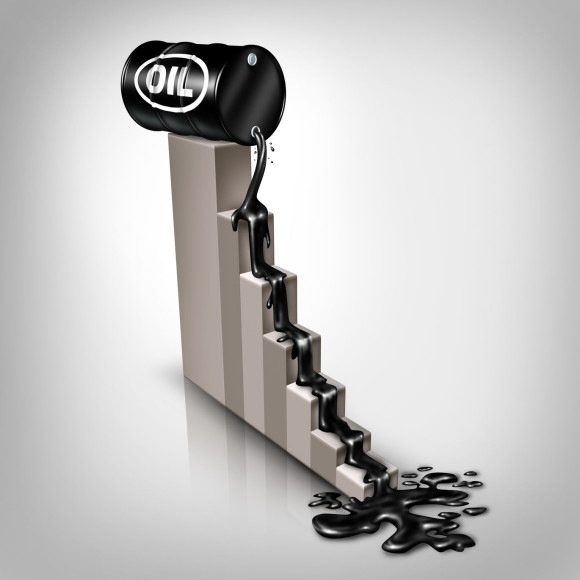Oil and gas companies, as well as service contractors, manufacturers, distributors, transportation companies and any entity that supports the energy complex including, local banks, construction firms and real estate markets in oil towns across the country, are in the midst of feeling the brunt of falling oil prices. As a result, CFOs are being asked to scrutinize costs including insurance spends and possible uninsured exposures.
Examples of how energy-related businesses are being affected by these falling prices include:
- Declining Revenue – Recently four oil and gas companies have filed for bankruptcy in Texas and Louisiana, and this trend is expected to worsen, given there are 20,000 U.S. small and midsize firms that collectively produce 75 percent of the oil and gas output, according to the Manhattan Institute for Policy Research. Most of these companies are coping with oil prices that are 50 percent below their height a year ago.
- Layoffs – Massive industrywide layoffs are likely to continue as a result of falling revenues, reducing cash flows and declining market capitalization.
- Consolidation – The slowdown is expected to increase M&A activity within the energy industry, especially among distressed small and medium-sized energy players, while companies with stronger cash flows will leverage opportunities to improve asset quality and gain market share.
- D&O Litigation – Declining revenue, increased bankruptcy filings, restructuring activity and problematic M&A deals are likely to generate additional litigation, particularly shareholder claims alleging breach of fiduciary duty against directors and officers.
As companies struggle to address these financial concerns, there are five solid tips that risk managers can employ that will help their balance sheet, create better control over cost and improve their ability to anticipate risk:
- Classification and Exposure Reviews – Properly classifying employees and proper payroll reporting for workers’ compensation, revenue reporting for general liability have an immediate impact on what a company pays in premium for these coverages. By conducting a thorough review of insured exposures for properties and liabilities, a company can more accurately identify and reduce costs.
- Collateral Review – Reviewing collateral requirements and subsequent elimination of collateral can directly increase a company’s lending capacity and help improve a strained balance sheet.
- Loss Forecasting – Using probabilistic models provide clients a clearer picture of potential risks and possible financial impact. By collecting and analyzing currently valued loss experience and historical exposure data, risk managers can determine the future ultimate cost of open claims and expected losses for the next three to five years. This process would allow an energy company to determine the most capital efficient deductible or retention structure for their insurance programs. As oil and gas companies experience revenue declines it is extremely important that they know the liabilities they may face in the future.
- Contract Review – Risk managers working in oil and gas companies should ask their broker or insurance carrier to conduct a comprehensive evaluation of their contracts including their vendor and lease contracts. The review helps to determine if indemnification language and insurance limit or deductible requirements align with existing coverage, company’s risk appetite and its financial capacity. Through this process companies are able to avoid uncovered claims for risks they are unknowingly taking on via contract language.
- Risk Management – Companies restructuring or involved in M&A will want to have access to competitive markets for D&O, errors and omissions, credit insurance, environmental coverage, employment practices, liability insurance and representations, and warranties insurance. Reducing exposure to loss directly translates to current or future liabilities, and it is critically important to minimize exposure to possible successor liabilities in M&A activity.
Energy and related industries are facing complex challenges with potentially severe financial consequences. For smaller oil and gas companies, the cost of raising new capital has risen sharply and debt refinancing options remain limited. By integrating this five-step guideline into a company’s strategy, risk managers can take important steps toward reducing risk, saving on premium spending and ensuring the efficient use of capital is made.
Topics Energy Oil Gas Risk Management
Was this article valuable?
Here are more articles you may enjoy.



 Uncertainty Keeps Prices Up; No Prior-Year Loss Development: Travelers
Uncertainty Keeps Prices Up; No Prior-Year Loss Development: Travelers  North Carolina Adjuster and Son Charged With Embezzlement in Roof Jobs
North Carolina Adjuster and Son Charged With Embezzlement in Roof Jobs  Former Congressman Charged After Collision with State Trooper in Florida
Former Congressman Charged After Collision with State Trooper in Florida  Dubai Floods Expose Weaknesses to a Rapidly Changing Climate
Dubai Floods Expose Weaknesses to a Rapidly Changing Climate 


